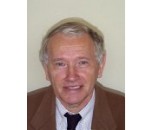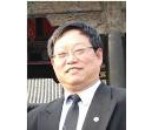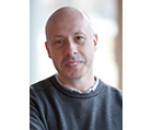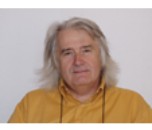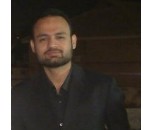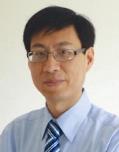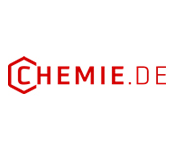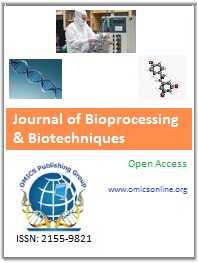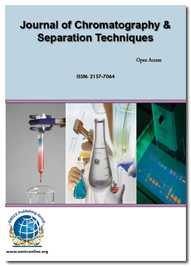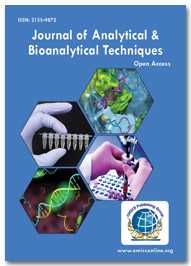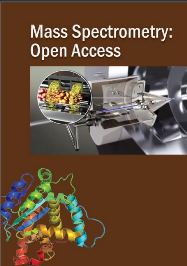Theme: Recent scientific innovatory approaches, novel technologies and applications of Mass Spectrometry and Chromatography
Mass Spectrometry 2017
Conferenceseries welcomes you to attend the 5th International Conference on Current Trends in Mass Spectrometry and Chromatography, during September 25-26, 2017 at Atlanta, Georgia, USA. We cordially invite all the participants who are interested in sharing their knowledge and research in the arena of Mass Spectrometry and its applications with the theme “Recent scientific innovatory approaches, novel technologies and applications of Mass Spectrometry.”
Track 1: Innovations in Mass Spectrometry
The search of metabolites which are present in biological samples and the comparison between different samples allow the construction of certain biochemical patterns. The mass spectrometry (MS) methodology applied to the analysis of biological samples makes it possible for the identification of many metabolites. The 100 chromatograms were concatenated in a vector. This vector, which can be plotted as a continuous (2D pseudospectrum), greatly simplifies for one to understand the subsequent dimensional multivariate analysis. To validate the method, samples from two human embryos culture medium were analyzed by high-pressure liquid chromatography–mass spectrometry (HPLC–MS). They work on the principle that many microorganisms have their own unique mass spectral signature based on the particular proteins and peptides that are present in the cells.
Identification of unknown peaks in gas chromatography (GC/MS)-based discovery metabolomics is challenging, and remains necessary to permit discovery of novel or unexpected metabolites that may allergic diseases processes and/or further our understanding of how genotypes relate to phenotypes. Here, we introduce two new technologies and an advances in pharmaceutical analytical methods that can facilitate the identification of unknown peaks. First, we report on a GC/Quadrupole-Orbitrap mass spectrometer that provides high mass accuracy, high resolution, and high sensitivity analyte detection.
Related Conferences of Innovations in Mass Spectrometry:
International Conference and Exhibition on Advances in HPLC and Chromatography Techniques March 17-18, 2016 London, UK; International Conference on Pharmaceutical Chemistry August 04-06, 2016 Frankfurt, Germany; 4th International Conference on Medicinal Chemistry & Computer Aided Drug Designing November 02-04, 2015 Atlanta, USA; Asia Pacific Mass Spectrometry Congress October 13-15, 2016 Kuala Lumpur, Malaysia; 2nd International Conference on Separation Techniques November 03-05, 2016 Valencia, Spain; 9th Alpine Conference on Solid State Plasmas: New Concepts and Applications September 13-17, 2015 Chamonix-Mont-Blanc, France; Application of NMR Spectroscopy in Pharmaceutical Bioprocessing September 23-25, 2015 Island, Croatia; Asilomar Conference: Native Mass Spectrometry-based Structural Biology Techniques, October 16-20, 2015 California, United States; Experimental Nuclear Magnetic Resonance Imaging Conference, April 20-15, 2016 Pittsburgh, United States; Chemistry Conferences Europe June 16-18, 2016 Rome, Italy: 21st International Mass Spectrometry Conference August 20-26, 2016 Toronto, Canada; British Mass Spectrometry Society, Canadian Society for Mass Spectrometry, China Mass Spectrometry Society.
Track 2: Applications of Mass Spectrometry
Application of Mass Spectrometry includes the ion and weights separation. The samples are usually introduced through a heated batch inlet, heated direct insertion probe, or a gas chromatograph. Ionization mass spectrometry (ESI-MS) which has become an increasingly important technique in the clinical laboratory for structural study or quantitative measurement of metabolites in a complex biological sample. MS/MS applications are plentiful, for example in elucidation of structure, determination of fragmentation mechanisms, determination of elementary compositions, applications to high-selectivity and high-sensitivity analysis, observation of ion–molecule reactions and thermochemical data determination (kinetic method).
Mass spectrometry is an analytical methods with high specificity and a growing presence in laboratory medicine. The researchers and scientist are using various types of mass spectrometers in clinical laboratories around the world, and, as a result, significant improvements in assay performance are occurring rapidly in areas such as toxicology, endocrinology, and biochemical markers. In recent past, there has been a surge in research and development activities in molecular biology, drug development, proteomics, biomarkers and gene expression studies. To address these needs, mass spectroscopy device manufacturers, are constantly engaged in developing the mass spectroscopy technology.. This review serves as a basic introduction to mass spectrometry, its uses, and associated challenges in the clinical laboratory and ends with a brief discussion of newer methods with the greatest potential for Clinical and Diagnostic Research.
Related Conferences of Applications of Mass Spectrometry:
Asia Pacific Mass Spectrometry Congress October 13-15, 2016 Kuala Lumpur, Malaysia; International Conference and Exhibition on Advances in HPLC and Chromatography Techniques March 17-18, 2016 London, UK; International Conference on Pharmaceutical Chemistry August 04-06, 2016 Frankfurt, Germany; 4th International Conference on Medicinal Chemistry & Computer Aided Drug Designing November 02-04, 2015 Atlanta, USA; 2nd International Conference on Separation Techniques November 03-05, 2016 Valencia, Spain; 9th Alpine Conference on Solid State Plasmas: New Concepts and Applications September 13-17, 2015 Chamonix-Mont-Blanc, France; Application of NMR Spectroscopy in Pharmaceutical Bioprocessing September 23-25, 2015 Island, Croatia; Asilomar Conference: Native Mass Spectrometry-based Structural Biology Techniques, October 16-20, 2015 California, United States; Experimental Nuclear Magnetic Resonance Imaging Conference, April 20-15, 2016 Pittsburgh, United States; 21st International Mass Spectrometry Conference August 20-26, 2016 Toronto, Canada, Chemistry Conferences Europe June 16-18, 2016 Rome, Italy; American Society for Mass Spectrometry, Brazilian Mass Spectrometry Society, Belgian Society for Mass Spectrometry
Track 3: Mass Spectrometry in Proteomics
It is indispensable tool for proteomics research. Mass spectrometry with proteome has given many advances in method of separation in proteomics, complete characterization of proteins have been the goal of proteomics
In recent the advancement of mass spectrometry gave lot of benefit to proteomics as mail tool. The study of proteins interactions by the intellectuals made the more easy by using the MS method in which they are getting accurate results for their tests.
Track 4: Recent Advances in Mass Spectrometry
New mass spectrometry (MS) methods, collectively known as data independent analysis and hyper reaction monitoring, have recently emerged. The analysis of peptides generated by proteolytic digestion of proteins, known as bottom-up proteomics, serves as the basis for many of the protein research undertaken by mass spectrometry (MS) laboratories. Discovery-based or shotgun proteomics employs data-dependent acquisition (DDA). Herein, a hybrid mass spectrometer first performs a survey scan, from which the peptide ions with the intensity above a predefined threshold value, are stochastically selected, isolated and sequenced by product ion scanning. n targeted proteomics, selected environmental Monitoring (ERM), also known as multiple reaction monitoring (MRM), is used to monitor a number of selected precursor-fragment transitions of the targeted amino acids. The selection of the SRM transitions is normally calculated on the basis of the data acquired previously by product ion scanning, repository data in the public databases or based on a series of empirical rules predicting the Enzyme structure sites.
Related Conferences of Recent Advances in Mass Spectrometry:
International Conference on Pharmaceutical Chemistry August 04-06, 2016 Frankfurt, Germany; Asia Pacific Mass Spectrometry Congress October 13-15, 2016 Kuala Lumpur, Malaysia; International Conference and Exhibition on Advances in HPLC and Chromatography Techniques March 17-18, 2016 London, UK; 4th International Conference on Medicinal Chemistry & Computer Aided Drug Designing November 02-04, 2015 Atlanta, USA; 2nd International Conference on Separation Techniques November 03-05, 2016 Valencia, Spain; 9th Alpine Conference on Solid State Plasmas: New Concepts and Applications September 13-17, 2015 Chamonix-Mont-Blanc, France; Application of NMR Spectroscopy in Pharmaceutical Bioprocessing September 23-25, 2015 Island, Croatia; Experimental Nuclear Magnetic Resonance Imaging Conference, April 20-15, 2016 Pittsburgh, United States; 21st International Mass Spectrometry Conference August 20-26, 2016 Toronto, Canada, Chemistry Conferences Europe June 16-18, 2016 Rome, Italy; Asilomar Conference: Native Mass Spectrometry-based Structural Biology Techniques, October 16-20, 2015 California, United States; Dutch Society for Mass Spectrometry, European Society for Mass Spectrometry, Finnish Mass Spectrometry Society
Track 5: Mass spectrometry imaging
Mass spectrometry imaging is a technique used in mass spectrometry to visualize the spatial distribution of chemical compositions e.g. compounds, biomarker metabolites, peptides or proteins by their molecular masses. Although widely used traditional methodologies like radiochemistry and immunohistochemistry achieve the same goal as MSI, they are limited in their abilities to analyze multiple samples at once, and can prove to be lacking if researchers do not have prior knowledge of the samples being studied. Emergency Radiology in the field of MSI are MALDI imaging and secondary ion mass spectrometry imaging (SIMS imaging). Imaging Mass Spectrometry is a technology that combines advanced analytical techniques for the analysis of biomedical Chromatography with spatial fidelity. An effective approach for imaging biological specimens in this way utilizes Matrix-Assisted Laser Desorption Ionization Mass Spectrometry (MALDI MS). Briefly, molecules of interest are embedded in an organic matrix compound that assists in the desorption and ionization of compounds on irradiation with a UV laser. The mass-to-charge ratio of the ions are measured using a Tandem Mass Spectrometry over an ordered array of ablated spots. Multiple analytes are measured simultaneously, capturing a representation or profile of the biological state of the molecules in that sample at a specific location on the tissue surface.
Related Conferences of Mass spectrometry imaging:
4th International Conference on Medicinal Chemistry & Computer Aided Drug Designing November 02-04, 2015 Atlanta, USA; Asia Pacific Mass Spectrometry Congress October 13-15, 2016 Kuala Lumpur, Malaysia; International Conference and Exhibition on Advances in HPLC and Chromatography Techniques March 17-18, 2016 London, UK; International Conference on Pharmaceutical Chemistry August 04-06, 2016 Frankfurt, Germany; 2nd International Conference on Separation Techniques November 03-05, 2016 Valencia, Spain; 9th Alpine Conference on Solid State Plasmas: New Concepts and Applications September 13-17, 2015 Chamonix-Mont-Blanc, France; Application of NMR Spectroscopy in Pharmaceutical Bioprocessing September 23-25, 2015 Island, Croatia; Asilomar Conference: Native Mass Spectrometry-based Structural Biology Techniques, October 16-20, 2015 California, United States; Experimental Nuclear Magnetic Resonance Imaging Conference, April 20-15, 2016 Pittsburgh, United States; 21st International Mass Spectrometry Conference August 20-26, 2016 Toronto, Canada, Chemistry Conferences Europe June 16-18, 2016 Rome, Italy; China Mass Spectrometry Society, Dutch Society for Mass Spectrometry, Canadian Society for Mass Spectrometry
Track 6: Principles of Mass Spectrometry
As per principles of Mass Spectrometry, Mass spectrometry is an analytical tool used for measuring the molecular mass of a sample. Ionization is the atom or molecule is ionized by knocking one or more electrons off to give a positive ion. This is true even for things which you would normally expect to form negative ions or never form ions at all. Most mass spectrometers work with positive ions. New Ion activation methods for tandem mass spectrometry; this is followed by tandem mass spectrometry, which implies that the activation of ions is distinct from the laboratory research, and that the precursor and product ions are both characterized independently by their mass/charge ratios. As per the Frost and Sullivan report pharmaceutical analytical market is growing on an average 0.4% annually. This report studies the global mass spectrometry market over the forecast period of 2013 to 2018. Once analyte ions are formed in the gas phase, a variety of mass analyzers are available and used to separate the ions according to their mass-to-charge ratio (m/z). Mass spectrometers operate with the dynamics of charged particles in electric and magnetic particles in vacuum described by the Lorentz force law and Newton’s second law of motion.
Related Conferences of Fundamentals of Mass Spectrometry:
2nd International Conference on Separation Techniques November 03-05, 2016 Valencia, Spain; Asia Pacific Mass Spectrometry Congress October 13-15, 2016 Kuala Lumpur, Malaysia; International Conference and Exhibition on Advances in HPLC and Chromatography Techniques March 17-18, 2016 London, UK; International Conference on Pharmaceutical Chemistry August 04-06, 2016 Frankfurt, Germany; 4th International Conference on Medicinal Chemistry & Computer Aided Drug Designing November 02-04, 2015 Atlanta, USA; 9th Alpine Conference on Solid State Plasmas: New Concepts and Applications September 13-17, 2015 Chamonix-Mont-Blanc, France; Application of NMR Spectroscopy in Pharmaceutical Bioprocessing September 23-25, 2015 Island, Croatia; Asilomar Conference: Native Mass Spectrometry-based Structural Biology Techniques, October 16-20, 2015 California, United States; 21st International Mass Spectrometry Conference August 20-26, 2016 Toronto, Canada, Chemistry Conferences Europe June 16-18, 2016 Rome, Italy; Experimental Nuclear Magnetic Resonance Imaging Conference, April 20-15, 2016 Pittsburgh, United States; French Society for Mass Spectrometry, German Society for Mass Spectrometry, Hong Kong Society of Mass Spectrometry
Track 7: Ionization Techniques
There are many types of ionization techniques are used in mass spectrometry methods. The classic methods that most chemists are familiar with are electron impact (EI) and Fast Atom Bombardment (FAB). These techniques are not used much with modern mass spectrometry except EI for environmental work using GC-MS. Electrospray ionization (ESI) - ESI is the ionization technique that has become the most popular ionization technique. The electrospray is created by putting a high voltage on a flow of liquid at atmospheric pressure, sometimes this is assisted by a concurrent flow of gas. Atmospheric Pressure Chemical Ionization (APCI) - APCI is a method that is typically done using a similar source as ESI, but instead of putting a voltage on the Electrospray Tandem Mass Spectrometry Newborn Screening itself, the voltage is placed on a needle that creates a corona discharge at atmospheric pressures. Matrix Assisted Laser Electrophoresis is a technique of ionization in which the sample is bombarded with a laser. The sample is typically mixed with a matrix that absorbs the radiation biophysics and transfer a proton to the sample. Gas-Phase Ionization.
Related Conferences of Ionization Techniques:
Asia Pacific Mass Spectrometry Congress October 13-15, 2016 Kuala Lumpur, Malaysia; International Conference and Exhibition on Advances in HPLC and Chromatography Techniques March 17-18, 2016 London, UK; International Conference on Pharmaceutical Chemistry August 04-06, 2016 Frankfurt, Germany; 4th International Conference on Medicinal Chemistry & Computer Aided Drug Designing November 02-04, 2015 Atlanta, USA; 2nd International Conference on Separation Techniques November 03-05, 2016 Valencia, Spain; 9th Alpine Conference on Solid State Plasmas: New Concepts and Applications September 13-17, 2015 Chamonix-Mont-Blanc, France; Application of NMR Spectroscopy in Pharmaceutical Bioprocessing September 23-25, 2015 Island, Croatia; Asilomar Conference: Native Mass Spectrometry-based Structural Biology Techniques, October 16-20, 2015 California, United States; Experimental Nuclear Magnetic Resonance Imaging Conference, April 20-15, 2016 Pittsburgh, United States; 21st International Mass Spectrometry Conference August 20-26, 2016 Toronto, Canada, Chemistry Conferences Europe June 16-18, 2016 Rome, Italy; Indian Society for Mass Spectrometry, International Mass Spectrometry Foundation, Irish Mass Spectrometry Society
Track 8: Mass Spectrometry Configurations and Sample preparation Techniques
Mass Spectrometry Configurations and Techniques is regards to Mass Spectrometry configuration of source, analyzer, and detector becomes conventional in practice, often a compound acronym arises to designate it, and the compound acronym may be better known among nonspectrometrists than the component acronyms. The Mass Spectrometry instrument consists of three major components those are Ion Source: For producing gaseous ions from the substance being studied; Analyzer: For resolving the ions into their characteristics mass components according to their mass-to-charge ratio and Detector System: For detecting the ions and recording the relative abundance of each of the resolved ionic species. A Imaging Mass Spectrometry is simply a device designed to determine the mass of individual atoms or molecules. Atoms of different elements have different masses and thus knowledge of the molecular mass can very often be translated into knowledge of the chemical species involved. TOF MS is the abbreviation for Time of Flight Mass Spectrometry. Charged ions of various sizes are generated on the sample slide and MALDI is the abbreviation for "Matrix Assisted Laser Desorption/Ionization." Mass spectrometry consists basically of weighing ions in the gas phase. The instrument used could be considered as a sophisticated balance which determines with high precision the masses of individual atoms and molecules. Depending on the samples chemical and mechanical propertiess, different ionization techniques can be used. One of the main factor in choosing which ionization technique to be used is biochemical process. For samples that are not themolabile and relatively volatile, ionization such as Electron Impact and/or Chemical Ionization can be effectively used.
Related Conferences of Mass Spectrometry Configurations and Sample preparation Techniques:
Asia Pacific Mass Spectrometry Congress October 13-15, 2016 Kuala Lumpur, Malaysia; International Conference and Exhibition on Advances in HPLC and Chromatography Techniques March 17-18, 2016 London, UK; International Conference on Pharmaceutical Chemistry August 04-06, 2016 Frankfurt, Germany; 4th International Conference on Medicinal Chemistry & Computer Aided Drug Designing November 02-04, 2015 Atlanta, USA; 2nd International Conference on Separation Techniques November 03-05, 2016 Valencia, Spain; 9th Alpine Conference on Solid State Plasmas: New Concepts and Applications September 13-17, 2015 Chamonix-Mont-Blanc, France; Application of NMR Spectroscopy in Pharmaceutical Bioprocessing September 23-25, 2015 Island, Croatia; Asilomar Conference: Native Mass Spectrometry-based Structural Biology Techniques, October 16-20, 2015 California, United States; Experimental Nuclear Magnetic Resonance Imaging Conference, April 20-15, 2016 Pittsburgh, United States; 21st International Mass Spectrometry Conference August 20-26, 2016 Toronto, Canada, Chemistry Conferences Europe June 16-18, 2016 Rome, Italy; Italian Society of Mass Spectrometry, Mass Spectrometry Society of Japan, Korean Society for Mass Spectrometry
Track 9: Chromatography and High Performance Liquid Chromatography (HPLC)
Liquid chromatography-mass spectrometry analysis of small molecules from biofluids requires sensitive and robust assays. Because of the very complex nature of many biological samples, efficient sample preparation protocols to remove unwanted components and to selectively extract the compounds of interest are an essential part of almost every bioanalytical workflow. High-performance liquid chromatography (HPLC) is a separation technique that can be used for the analysis of organic molecules and ions. HPLC is based on mechanisms of adsorption, partition and ion exchange, depending on the type of stationary phase used. HPLC involves a solid stationary phase, normally packed inside a stainless-steel column, and a liquid mobile phase. Separation of the components of a solution results from the difference in the relative distribution ratios of the solutes between the two phases. HPLC can be used to assess the purity and/or determine the content of many pharmaceutical bioprocessing substances. It can also be used to determine enantiomeric composition, using suitably modified mobile phases or chiral stationary phases. Individual separation mechanisms of adsorption, partition and ion exchange rarely occur in isolation since several principles act to a certain degree simultaneously.In a very environmental monitoring, hydrophilic molecules will tend to associate with each other (like water drops on an oily surface). The hydrophilic molecules in the mobile phase will tend to adsorb to the surface on the inside and outside of a particle if that surface is also hydrophilic. Increasing the polarity of the mobile phase will subsequently decrease the adsorption and ultimately cause the sample molecules to exit the column. This mechanism is called Normal Phase Analytical Chromatography. It is a very powerful technique that often requires non-polar solvents. Due to safety and environmental concerns this mode is used mostly as an analytical technique and not for process applications.
Related Conferences of Chromatography High Performance Liquid Chromatography :
International Conference and Exhibition on Advances in HPLC and Chromatography Techniques March 17-18, 2016 London, UK; International Conference on Pharmaceutical Chemistry August 04-06, 2016 Frankfurt, Germany; 4th International Conference on Medicinal Chemistry & Computer Aided Drug Designing November 02-04, 2015 Atlanta, USA; Asia Pacific Mass Spectrometry Congress October 13-15, 2016 Kuala Lumpur, Malaysia; 2nd International Conference on Separation Techniques November 03-05, 2016 Valencia, Spain; 9th Alpine Conference on Solid State Plasmas: New Concepts and Applications September 13-17, 2015 Chamonix-Mont-Blanc, France; Application of NMR Spectroscopy in Pharmaceutical Bioprocessing September 23-25, 2015 Island, Croatia; Experimental Nuclear Magnetic Resonance Imaging Conference, April 20-15, 2016 Pittsburgh, United States; 21st International Mass Spectrometry Conference August 20-26, 2016 Toronto, Canada, Chemistry Conferences Europe June 16-18, 2016 Rome, Italy; Asilomar Conference: Native Mass Spectrometry-based Structural Biology Techniques, October 16-20, 2015 California, United States; Singapore Society for Mass Spectrometry, South African Association of Mass Spectrometry, Spanish Society for Mass Spectrometry
Track 10: Maintenanc,Troubleshooting, Data Analysis and Experimentation in mass spectrometry
Mass spectrometry experiment (MS) is a high-throughput experimental method that characterizes molecules by their mass-to-charge ratio. The MS is composed of sample preparation, molecular ionization, detection, and instrumentation analysis processes. MS is beneficial in that it is generally fast, requires a small amount of sample, and provides high accuracy measurements. For these reasons, MS alone or combined with other structural proteomics techniques is widely used for various molecular biology analysis purposes. Examples of the analysis include post-translations modifications in proteins, identification of vibrational components in proteins, and analysis of protein conformation and dynamics. We will focus on MS-coupled methods that provide information about conformation and dynamics of the protein being studied. For a comprehensive review on MS procedures and for a review on various types of MS-coupled methods.The performance of a mass spectrometer will be severely impaired by the lack of a good vacuum in the ion transfer region of the mass analyser. As the vacuum deteriorates it will become insufficient to maintain biomedical instrumentation in the operating mode. If the foreline pump is not maintained, the oil may become so contaminated that the optimum pumping is no longer possible. Initially, gas transport and metabolism ballasting may clean the oil. If the oil has become discoloured then it should be changed according to the pump manufacturers’ maintenance manual. When rotary pumps are used to pump away conflict resolution, the solvent can become dissolved in the oil causing an increase in backing line pressure. Gas ballasting is a means of purging the oil to remove dissolved contaminants
Related Conferences of Maintenanc,Troubleshooting, Data Analysis and Experimentation in mass spectrometry:
International Conference on Pharmaceutical Chemistry August 04-06, 2016 Frankfurt, Germany; 4th International Conference on Medicinal Chemistry & Computer Aided Drug Designing November 02-04, 2015 Atlanta, USA; Asia Pacific Mass Spectrometry Congress October 13-15, 2016 Kuala Lumpur, Malaysia; International Conference and Exhibition on Advances in HPLC and Chromatography Techniques March 17-18, 2016 London, UK; 2nd International Conference on Separation Techniques November 03-05, 2016 Valencia, Spain; 9th Alpine Conference on Solid State Plasmas: New Concepts and Applications September 13-17, 2015 Chamonix-Mont-Blanc, France; Application of NMR Spectroscopy in Pharmaceutical Bioprocessing September 23-25, 2015 Island, Croatia; 21st International Mass Spectrometry Conference August 20-26, 2016 Toronto, Canada, Chemistry Conferences Europe June 16-18, 2016 Rome, Italy; Asilomar Conference: Native Mass Spectrometry-based Structural Biology Techniques, October 16-20, 2015 California, United States; Experimental Nuclear Magnetic Resonance Imaging Conference, April 20-15, 2016 Pittsburgh, United States; Norwegian Society for Mass Spectrometry, Polish Mass Spectrometry Society, Russian Society for Mass Spectrometry.
Track 11: Fragmentation in Mass spectrometry.
Fragmentation is the dissociation of energetically unstable molecular ions formed from passing the molecules in the ionization chamber of a mass spectrometer. The fragments of a molecule is used to determine structural information of the molecule as it causes a pattern in the mass spectrum.
In organic Compounds When the vaporized organic sample passes into the ionization chamber of a mass spectrometer, it is bombarded by a stream of electrons. These electrons have a high enough energy to knock an electron off an organic molecule to form a positive ion. This ion is called the molecular ion - or sometimes the parent ion.
Track 11: Applications of Chromatography
Chromatography of many kinds is broadly utilized all through the industrial business. Natural testing research centers search for trace quantities of contaminants such as PCBs in waste oil, and pesticides such as DDT in groundwater. The Environmental Protection Agency utilizes chromatography to test drinking water and to screen air quality. Pharmaceutical organizations utilize chromatography both to get ready expansive amounts of greatly immaculate materials, and furthermore to examine the cleansed mixes for follow contaminants.
A developing utilization of chromatography in the pharmaceutical business is for the partition of chiral mixes. These mixes have particles that vary somewhat in the way their molecules are situated in space.
Chromatography is utilized for quality control in the sustenance business, by isolating and breaking down added substances, vitamins, additives, proteins, and amino acids. It can likewise particular and distinguish contaminants, for example, aflatoxin, a disease bringing on compound created by a shape on peanuts. Chromatography can be utilized for purposes as fluctuated as discovering medication mixes in pee or other body liquids, to searching for hints of combustible chemicals in copied material from conceivable incendiarism destinations.
Track 12: Techniques of Chromatography
Chromatography was used for separation of yellow and green plant pigments, Chromatography has since evolved into a very general separation method for many types of mixtures.Chromatographic methods are essential in the analytical and preparative separation of biological samples. Gel filtration chromatography (size exclusion chromatography) is often the method of choice to purify macromolecules, taking advantage of their different sizes and shapes. Ion exchange chromatography is also useful for the separation of macromolecules, operating based on the various net charges on their surface, which can be tuned via the pH of the medium. Biological specificity in enzyme-substrate, enzyme-inhibitor, receptor-ligand, antigen-antibody (and other) interactions is utilised in affinity chromatography. In this method, one interaction partner is immobilised on a solid surface (stationary phase) and can selectively bind its interacting partner from a mixture in the mobile phase. The other components of the mixture can then be removed by replacing the mobile phase (washing). The pure material is then eluted by applying a mobile phase that disrupts the specific interaction..
Mass Spectrometry 2017 welcomes all attendees, presenters, and exhibitors from all over the world to Atlanta, USA. We are delighted to invite you all to attend and register for the “5th International Conference on Current Trends in Mass Spectrometry (Mass spectrometry 2017)” which is going to be held during September 25-27, 2017 in Atlanta, USA.
Global mass spectrometry market is segmented on the basis of platform, application, and region.The Report given by the experts for global mass spectrometry market for the forecast period of 2015 to 2020 is that the market is expected to reach USD 7279.1 Million by 2020 from USD 4919.9 in 2015 at a CAGR of 8.1% during the forecast period. The market report includes (Hybrid mass spectrometry (Triple Quadrupole, QTOF, & FTMS), Single mass spectrometry (Quadrupole, TOF, & Ion trap)) and by Application (Pharmaceuticals, Biotechnology). In 2015, North America is expected to account for the largest share of the mass spectrometry market, followed by Europe and Asia-Pacific.
The mass spectroscopy global market is driven by advancing technology, however, it is also trimming life cycle of existing products. With technological advances, application of mass spectroscopy is increasing rapidly.
The organizing committee is gearing up for an exciting and informative conference program including plenary lectures, symposia, workshops on a variety of topics, poster presentations and various programs for participants from all over the world. We invite you to join us at the Mass Spectrometry 2017, where you will be sure to have a meaningful experience with scholars from around the world. All members of the Mass Spectrometry 2017 organizing committee look forward to meeting you in Atlanta, USA.
The mass spectrometry community is probably the largest group of scientists working around a single tool. Mass spectrometry (MS), arguably the most important analytical spectroscopic tool of modern times. There is no single area of experimental science where mass spectroscopy is not being used. There is no university or research institution in the developed world without a mass spectrometer.
As per the Frost and Sullivan report analytical market is growing on an average 0.4% annually. This report studies the global mass spectrometry market over the forecast period of 2013 to 2018. The market was estimated at $3.9 billion in 2013 and is expected to reach $5.9 billion by 2018, growing at a CAGR of 8.7% from 2013 to 2018.North America dominated the global mass spectrometry market in 2013, followed by Europe and Asia. The North American market is likely to be driven by factors such as the increasing number of government investments in pharmaceutical, biotechnology, medical, and academic research studies that make use of mass spectrometry techniques. On the other hand, Asia is expected to grow at the highest CAGR due to the presence of high-growth markets such as India and China, the improved funding scenario in this region, increasing number of conferences and exhibitions on mass spectrometry, and increased focus of the giant players in these countries.
Conference Highlights:
-
- Applications of Mass Spectrometry
- New Approaches in Mass Spectrometry
- Recent Advances and Development in Mass Spectrometry
- Mass spectrometry Imaging
- Fundamentals of Mass Spectrometry
- Ionization Techniques
- Mass Spectrometry Configurations and Sample Preparation Techniques
- Chromatography and High Performance Liquid Chromatography (HPLC)
- Maintenance, Troubleshooting, Data Analysis and Experimentation in Mass Spectrometry
Why to attend???
1.To learn about key issues in the industry as a whole (and your area of interest in particular) as articulated by practitioners.
2. To meet people and organizations addressing these same key issues.
3. To meet people with whom you’ve established a relationship on social media.
4. To initiate relationships with others that you can continue by social media and/or meetings in person.
5. To learn about job, internship, project and other work-based possibilities.
6. To learn about fellowship and grant opportunities relevant to your area(s) of interest.
7. To gain insight into the experiences of others who face challenges similar to yours.
8. To learn about publications and other resources relevant to your area(s) of interest.
A Unique Opportunity for Advertisers and Sponsors at this International event:
http://massspectra.com/sponsors.php
Major Mass Spectrometry Associations around the Globe:
AB Sciex Research and Development (CDN)
ABRF (Association of Biomolecular Resource Facilities)
Advanced Materials Technology Inc. (AMT)
Advion BioServices, Midwest Drug Discovery and Metabolism Center of Excellence
American Analytical Chemistry Laboratories Corporation (AACL)
American Association for Clinical Chemistry (AACC)
American Society for Biochemistry and Molecular Biology (ASBMB)
ASMS (American Society for Mass Spectrometry)
Major Mass Spectrometry Associations in Europe
European Proteomics Association (EuPA)
Proteomics societies, British Society for Proteome Research
European Society for Separation Science (EuSSS)
European Sales & Marketing Association (ESMA)
The International Association of Forensic Toxicologists
Glance at Market of Analytical Instrument:
The global laboratory products market totaled $38.1 billion in 2012, with the 2013 market size forecast to reach $38.5 billion. The global laboratory products market grew 2.0% in 2012, and fell down to 1.2% in 2013 in response to global economic conditions subsequently. India and China remain the fastest growing markets analyzed expanding at CAGRs of 12.1% and 9.4%, respectively, from 2012 2015.North America is the largest market, followed by Europe and Asia. Asian market is slated to grow at the highest rate over the next five years. Asian region with emphasis on China and India. Apart from Asia, countries such as Brazil, Mexico, and Africa are also projected to have significant growth in the mass spectrometry market. In the U.K., the National Institutes of Health funded the University of Cardiff with a grant of $1.2 million for biomedical research In Europe, Germany has increased its funding for research, and in the USA mass spectrometry is used in the food testing processes.
Top Mass Spectrometry Universities in USA
· Georgia State University, USA
· Emory University, USA
· Stanford University, USA
· Chicago State University, USA
· Williams College, USA
· Princeton University, USA
· Massachusetts Institute of Technology, USA
· California University, USA
· Colorado University, USA
· Tulane University, USA
· University of Tennessee, USA
· University of Akron, USA
Mass Spectrometry 2016 Report:
We gratefully thank all our wonderful Keynote and Plenary Speakers, Conference Attendees, Students, Media Partners and Associations for making Mass Spectrometry 2016 grand success.
The 2nd International Conference on Current Trends in Mass Spectrometry, hosted by the ConferenceSeries Ltd was held during July 20-22, 2016 at Double Tree by Hilton, Chicago, USA based on the theme “Recent Scientific Research Approaches and Development in Mass Spectrometry". Benevolent response and active participation was received from the Organizing Committee Members along with Scientists, Researchers, Students and leaders from the area of Mass Spectrometry, Chromatography and Analytical science, who made this event a grand success.
ConferenceSeries Ltd expresses its gratitude to the conference Moderator, namely Dr. Eduardo Gil Santos for taking up the responsibility to coordinate during the sessions. We are indebted to your support. Similarly we also extend our appreciation towards our Poster judges namely, Dr. Sherry A Tanumihardjo, University of Wisconsin, USA and Dr. Gongke Li, Sun Yat-sen University, China.
ConferenceSeries Ltd would like to convey a warm gratitude to all the Honorable guests and Keynote Speakers of Mass Spectrometry 2016:
Eduard Rogatsky, Wadsworth Center, USA
Elliot R Bernstein, Colorado State University, USA
Magnus S Magnusson, University of Iceland, Iceland
Marek M Kowalczuk, University of Wolverhampton, UK
Regina Stabbert, Philip Morris International R&D, Switzerland
Brigitte Simons, SCIEX, Canada
Zhenhua GONG, Shanghai Jiaotong University, China
Miral Dizdaroglu, National Institute of Standards and Technology, USA
Yi Chen, Chinese Academy of Sciences, China
Lianming Wu, GlaxoSmithKline, USA
ConferenceSeries Ltd offers its heartfelt appreciation to organizations such as our esteemed Media Partners and other eminent personalities who supported the conference by promoting in various modes online and offline which helped the conference reach every nook and corner of the globe. It also took privilege to felicitate the Keynote Speakers, Organizing Committee Members, Chairs and Co-chairs who supported this event.
Best Poster Awards Winners:
- Sabyasachy Mistry, Purdue University, USA
- Tatsuya Urabe, Nishina center for Accelerator-Based Science, Japan
- Daniele B Rodrigues, University of Campinas, São Paulo, Brazil
With the grand success of Mass Spectrometry 2016, ConferenceSeries Ltd is proud to announce the "6th International Conference on Current Trends in Mass Spectrometry" to be held during September 25-26, 2017 at Atlanta, USA.
Let us meet again @ Mass Spectrometry 2017
Conference Highlights
- Applications of Mass Spectrometry
- Innovations in Mass Spectrometry
- Recent Advances and Development in Mass Spectrometry
- Mass spectrometry Imaging
- Princples of Mass Spectrometry
- Ionization Techniques
- Mass Spectrometry Configurations and Sample Preparation Techniques
- Chromatography and High Performance Liquid Chromatography (HPLC)
- Maintenance, Troubleshooting, Data Analysis and Experimentation in Mass Spectrometry
- Mass Spectrometry in Proteomics
- Fragmentation in Mass spectrometry
- Applications of Chromatography
- Techniques of Chromatography
To share your views and research, please click here to register for the Conference.
To Collaborate Scientific Professionals around the World
| Conference Date | September 25-26, 2017 | ||
| Sponsors & Exhibitors |
|
||
| Speaker Opportunity Closed | Day 1 | Day 2 | |
| Poster Opportunity Closed | Click Here to View | ||
Useful Links
Special Issues
All accepted abstracts will be published in respective Our International Journals.
- Journal of Chromatography & Separation Techniques
- Journal of Analytical & Bioanalytical Techniques
- Journal of Bioprocessing & Biotechniques
Abstracts will be provided with Digital Object Identifier by














